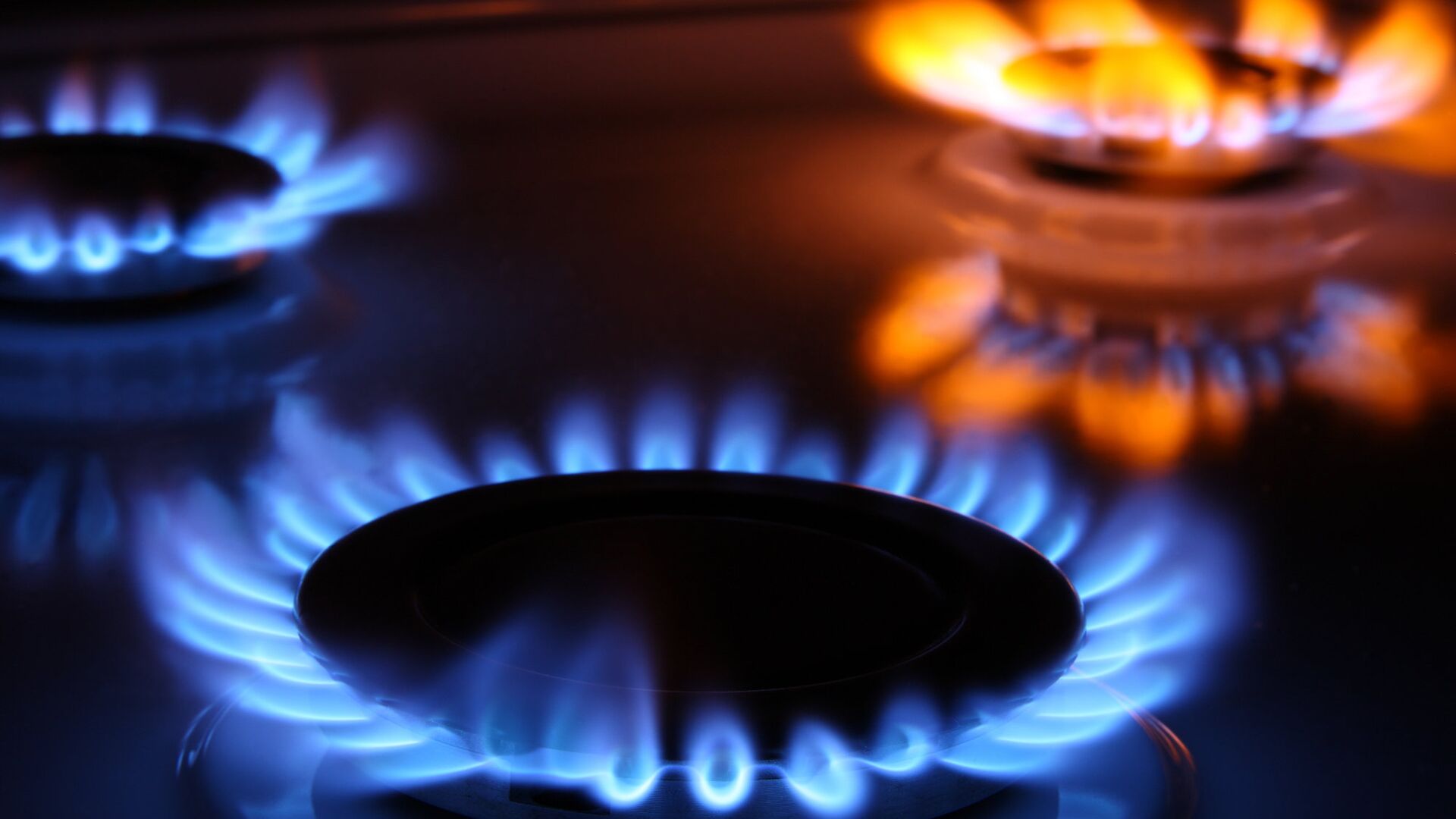https://sputnikglobe.com/20240506/gas-stoves-pose-serious-health-risks-to-adults-and-children-study-finds-1118279245.html
Gas Stoves Pose Serious Health Risks to Adults and Children, Study Finds
Gas Stoves Pose Serious Health Risks to Adults and Children, Study Finds
Sputnik International
Just 25 minutes of oven use in half of the tested home’s bedrooms exceeded the EPA’s and the WHO’s hourly guidelines for nitrogen dioxide concentrations.
2024-05-06T05:28+0000
2024-05-06T05:28+0000
2024-05-06T05:52+0000
beyond politics
science & tech
stanford
world health organization (who)
stanford university
us environmental protection agency (epa)
society
health
gas
asthma
https://cdn1.img.sputnikglobe.com/img/19259/95/192599517_0:104:2000:1229_1920x0_80_0_0_cc04efe50a30155b7f2670e9be9574ab.jpg
According to a new study from Stanford University researchers, long-term exposure to gas and propane stoves could be responsible for 50,000 ongoing pediatric asthma cases linked to unhealthy levels of nitrogen dioxide. This is because the nitrogen dioxide not only lingers in the kitchen but impacts the entire home - even hours after the stove is turned off.The researchers found that in the US, short-term nitrogen dioxide exposure from using a gas stove has frequently exceeded safety limits set by both the World Health Organization (WHO) and the United States Environmental Protection Agency (EPA). Just 25 minutes of oven use in half of the tested home’s bedrooms exceeded the EPA’s and the WHO’s hourly guidelines for nitrogen dioxide concentrations.The study also found that the negative health impacts of cooking with gas stoves disproportionately affects people who are Indigenous, Alaska Native, Hispanic and Black, as well as those in low-income households - with Black and Latino households exposed to 20% more nitrogen dioxide when compared to the national average, and American Indian and Alaska Native households facing levels that are 60% greater than the national average.Those living in homes smaller than 800 square feet are exposed to four times more nitrogen dioxide over a longer period of time when compared to those living in homes larger than 3,000 square feet, the study also found. But the researchers also indicated that race and income based disparities could include other factors apart from home size, including; cooking behavior, ventilation and time spent outdoors.The research also found that long term exposure to nitrogen dioxide from these stoves could be the cause of up to 19,000 adult deaths annually. Gas stoves also release formaldehyde and benzene which are known carcinogens; this exposure could be responsible for 200,000 childhood asthma cases each year, the researchers suggest.The study’s authors have suggested that removing a household’s gas or propane stove is the best solution for improving these dangers. Buying a portable induction burner, using an air filter, or opening a window while cooking was also suggested, as cost could be a barrier for some.
stanford
Sputnik International
feedback@sputniknews.com
+74956456601
MIA „Rosiya Segodnya“
2024
Mary Manley
https://cdn1.img.sputnikglobe.com/img/07e6/01/0b/1092187887_0:0:2048:2049_100x100_80_0_0_0c2cc4c84f89aff034cc55bb01fb6697.jpg
Mary Manley
https://cdn1.img.sputnikglobe.com/img/07e6/01/0b/1092187887_0:0:2048:2049_100x100_80_0_0_0c2cc4c84f89aff034cc55bb01fb6697.jpg
News
en_EN
Sputnik International
feedback@sputniknews.com
+74956456601
MIA „Rosiya Segodnya“
Sputnik International
feedback@sputniknews.com
+74956456601
MIA „Rosiya Segodnya“
Mary Manley
https://cdn1.img.sputnikglobe.com/img/07e6/01/0b/1092187887_0:0:2048:2049_100x100_80_0_0_0c2cc4c84f89aff034cc55bb01fb6697.jpg
gas stove, gas oven, nitrogen dioxide, gas poisoning, epa, who, health, safety, health issues, health problems, respiratory disease, damage to health, damage health, gas kills people, gas people, death from gas, death from intoxication
gas stove, gas oven, nitrogen dioxide, gas poisoning, epa, who, health, safety, health issues, health problems, respiratory disease, damage to health, damage health, gas kills people, gas people, death from gas, death from intoxication
Gas Stoves Pose Serious Health Risks to Adults and Children, Study Finds
05:28 GMT 06.05.2024 (Updated: 05:52 GMT 06.05.2024) The study found that in the long term, using gas or propane stoves means that the typical American could breathe in three-quarters of the nitrogen dioxide levels deemed safe by the WHO within people’s homes.
According to a new study from Stanford University researchers, long-term exposure to gas and propane stoves could be responsible for 50,000 ongoing pediatric asthma cases linked to unhealthy levels of nitrogen dioxide. This is because the nitrogen dioxide not only lingers in the kitchen but impacts the entire home - even hours after the stove is turned off.
The
researchers found that in the US, short-term nitrogen dioxide exposure from using a gas stove has frequently exceeded safety limits set by both the World Health Organization (WHO) and the United States Environmental Protection Agency (EPA). Just 25 minutes of oven use in half of the tested home’s bedrooms exceeded the EPA’s and the WHO’s hourly guidelines for nitrogen dioxide concentrations.
“We’ve done a really good job in this country of reducing outdoor pollution,” said Rob Jackson, professor of earth system science at the Stanford Doerr School of Sustainability and co-author of the study. “But we’ve ignored the risks that people face indoors. And that’s the air that we’re breathing most of the time.”
The
study also found that the negative health impacts of cooking with gas stoves
disproportionately affects people who are Indigenous, Alaska Native, Hispanic and Black, as well as those in low-income households -
with Black and Latino households exposed to 20% more nitrogen dioxide when compared to the national average, and American Indian and Alaska Native households facing levels that are 60% greater than the national average.Those living in homes smaller than 800 square feet are exposed to four times more nitrogen dioxide over a longer period of time when compared to those living in homes larger than 3,000 square feet, the study also found. But the researchers also indicated that race and income based disparities could include other factors apart from home size, including; cooking behavior, ventilation and time spent outdoors.
The research also found that long term exposure to nitrogen dioxide from these stoves could be the cause of up to 19,000 adult deaths annually. Gas stoves also release formaldehyde and benzene which are known carcinogens; this exposure could be responsible for 200,000 childhood asthma cases each year, the researchers suggest.
The study’s authors have suggested that removing a household’s gas or propane stove is the best solution for improving these dangers. Buying a portable induction burner, using an air filter, or opening a window while cooking was also suggested, as cost could be a
barrier for some.
“It compounds the injustice of air pollution: Poorer people, and often minority communities, breathe dirtier air outdoors all the time. And it turns out they also breathe dirtier air indoors. And it’s not fair,” said Jackson. “Everyone in the home is paying the price or the cost for that, for breathing this pollution.”





